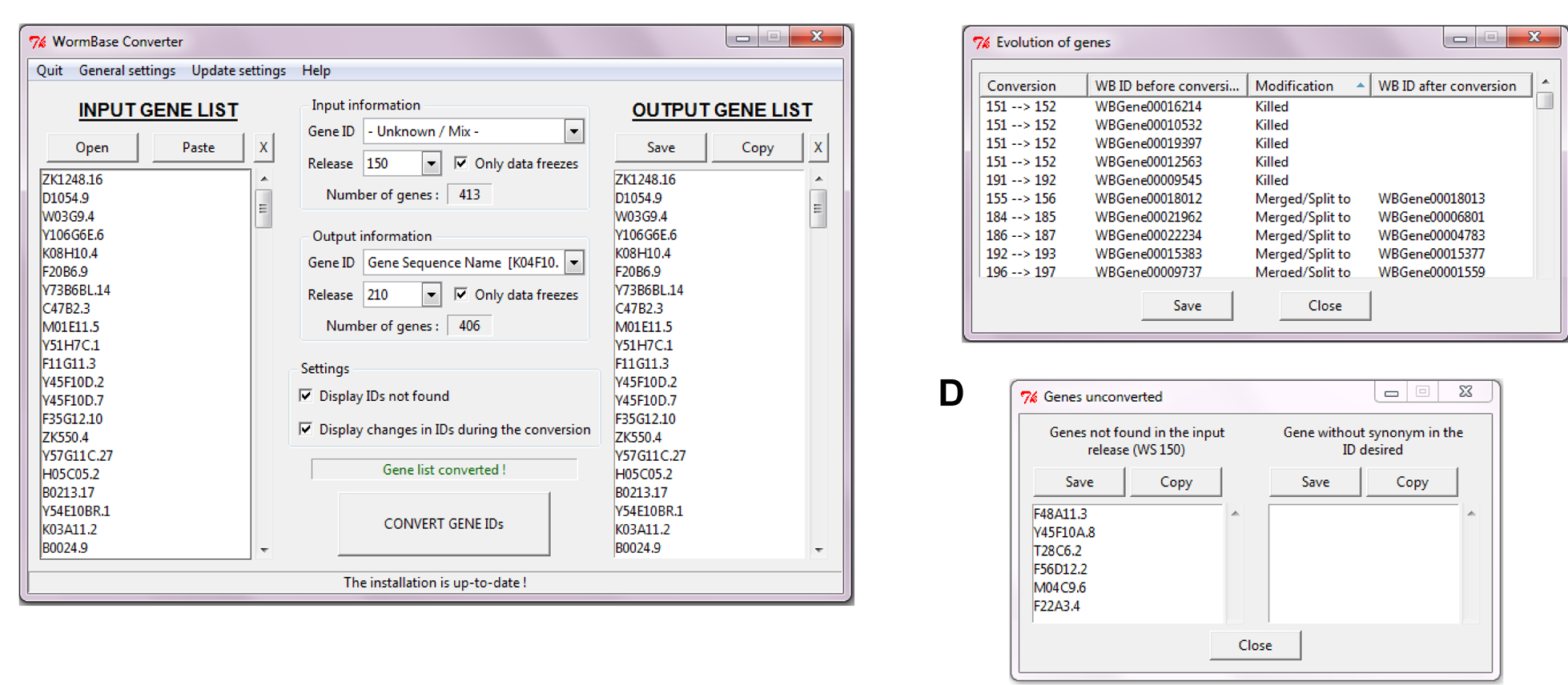Obtain thin metal sheeting [e.g., stainless steel foil .0025-.005cm thick] (Fig. 1B) and cut into strips with scissors (Fig. 1C).
Fold metal into a WW shape to make eight layers (Fig. 1D) that can sandwich the wire in the middle.
Sandwich the wire with the sheet metal (Fig. 1F).
Insert sandwich into slot in handle (Fig. 1F).
Tighten the nut (Fig. 1G).
Flame and use.
Some of the handles come with screw-on caps (Fig. 1H), which protect the pick if you put it in a lab coat or pocket. Fancier handles are available (Fig. 1I-J). The handles can be engraved for special gift editions.
Back Cover: Worms on Ice

View the full size version.
Cover artwork: Casablanca

View the full size version.
WormBase private instances via Amazon’s Cloud infrastructure
At WormBase, we are often asked if it is possible to install and run a local version of the website. Although certainly possible and very well documented, it’s not recommended for three reasons. 1) The size of the databases require substantial download time that must be repeated on a monthly basis to maintain an up-to-date resource; 2) The site is complex and requires significant time to install and configure; moreover, it is constantly evolving. You’ll need to commit time to keeping your site up-to-date; 3) Finally, the site requires a substantive compute environment along with concomitant system administration acumen required to keep everything up and running smoothly. If you still aren’t dissuaded, please see the installation notes on the WormBase Wiki.
But now — through the magic of cloud computing — you can have your own WormBase up-and-running in a few minutes.
Required Steps
- Establish an account on Amazon Web Services
- Find and launch the WormBase Amazon Machine Image (AMI) of the version of your choice.
- Connect to the newly launched server instance using your web browser.
- Stop the instance when done to avoid incurring further charges.
- Repeat steps 2-4 when a new version of WormBase is released.
Intended Audience
- Individual researchers or labs
- Entire departments
- Private research entities
Necessary Skills
- For launching an instance: none beyond using a web browser
- For more complicated data mining: command line expertise
Suggested Uses
- Access your own WormBase: speedy and it’s private
- Data mining: all databases preconfigured; includes common tools like BioPerl
- Development: build new features using the WormBase web platform
Caveats
- This is NOT a free service. Read the pricing details carefully.
- Although we will release new AMIs for each release, your instances will not receive bug updates.
For more information and a detailed walkthrough of the process, please see An introduction to cloud computing for biologists.
Keeping up with the changes
In common with many labs, in the past we routinely used DAVID to look for over-representation of functional classes in lists of genes. Unfortunately, the data in DAVID hasn’t been up-dated since September 2009. As an alternative, there’s a stand-alone version of DAVID called EASE. This allow labs to use their own lists. A post to the forum last year asking whether anyone maintained up-to-date EASE lists went unanswered, so we decided to make our own. That’s when we realized that there are three challenges. One is simply having a user-friendly interface to enter any new gene list, with the appropriate citation information. The second is converting any gene list culled from the literature into a coherent form. This is made more difficult by the fact that one still finds gene lists in published papers that (i) contain an apparently random mix of different types of gene identifiers and (ii) don’t say which WormBase WS version was used. The third is that with changes in predicted gene structure (genes being split, killed, fused, etc), lists become increasingly inaccurate with time.
We therefore made a first tool, the WormBase Converter. It can automatically detect different IDs (Transcript Name, Gene Name, WormBase ID, etc.) and convert them into the type of ID you need. It also allows the conversion between WormBase releases. You can convert a Gene ID from a specific release (e.g. WS170) into another release (e.g. WS220 for a conversion, or WS160 for a reverse-conversion).
As WormBase Converter was originally made for use with EASE, we didn’t design it to give a correspondence table, but are currently working on adding this as an option, so that there will be the possibility of having an output table listing in one column the input genes and in an adjacent column the list of genes in the required output format. There are stand-alone WormBase Converter versions for all common platforms (Unix, MacOS, Windows) available on Sourceforge.org. As keeping it up to date does take some effort, due to the need to correct the occasional Wormbase annotation anomaly, we also offer a client version that sends requests to the WormBase Converter server that we maintain at the CIML. We’d be delighted if anyone else would like to host this service!
We also made EASE Manager. This facilitates the entry and management of gene lists into EASE, but more importantly, interfaces with the WormBase Converter so that the genes that make up any list are kept up to date. Installation instructions and full documentation can be obtained from our website. We welcome feedback on these tools, which we also described in a paper earlier this year (Engelmann et al., 2011).
Figures


